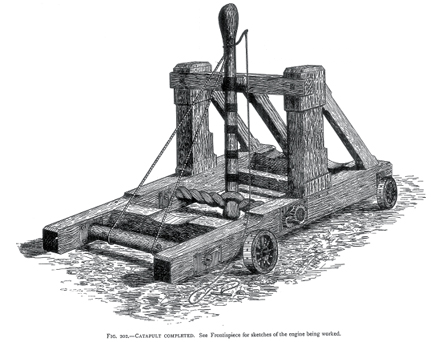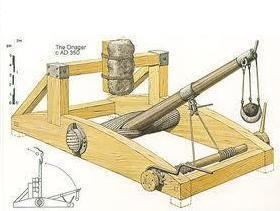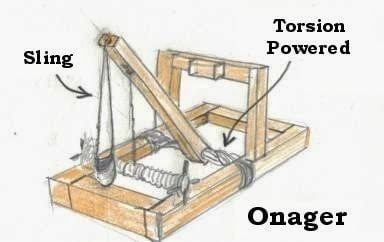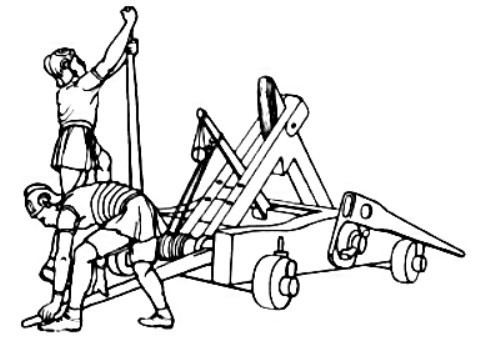 | ||
The onager was a Roman siege engine that was a type of catapult that uses a torsional force, generally from twisted rope, to store energy for the shot. The onager consisted of a large frame placed on the ground to whose front end a vertical frame of solid timber was rigidly fixed. A vertical spoke that passed through a rope bundle fastened to the frame had a sling attached which contained a projectile.

To fire it, the spoke or arm was forced down, against the tension of twisted ropes or other springs, by a windlass, and then suddenly released. As the sling swung outwards, one end would release, as with a staff-sling, and the projectile would be hurled forward. The arm would then be caught by a padded beam or bed, when it could be winched back again.

The onager's framework is made out of two beams from oak, which curve into humps. In the middle they have quite large holes in them, in which strong sinew ropes are stretched and twisted. A long arm is then inserted between the bundle of rope, at its end it has a pin and a pouch. It strikes on a huge buffer with a sack stuffed with fine chaff and secured by tight binding. When it comes to combat, a round stone (often clay balls with combustible substance in them, which explode on impact and burst into flames) is put in the pouch and the arm is winched down. Then, the master artilleryman strikes the pin with a hammer, and with a big blow, the stone is launched towards its target.

The onagers of the Roman Empire were mainly used for besieging forts or settlements. They would often be armed with large stones that could be covered with a combustible substance and set alight. They could be outranged by bows.

In the Middle Ages (recorded from around 1200) a less powerful version of the onager was used that held the projectile(s) in a fixed bowl instead of a sling. Some have speculated that contemporary drawings depicting fixed bowls were intentionally misleading and that catapults at the time still used slings. Such deception would occur because, at the time, catapults were state of the art weapons of war and their exact operation and construction would be a closely guarded secret.
It derived its name from the kicking action of the machine, similar to that of an onager (wild ass). This engine was sometimes called the mangonel, although that name may have also been used for a variety of Siege engines.
